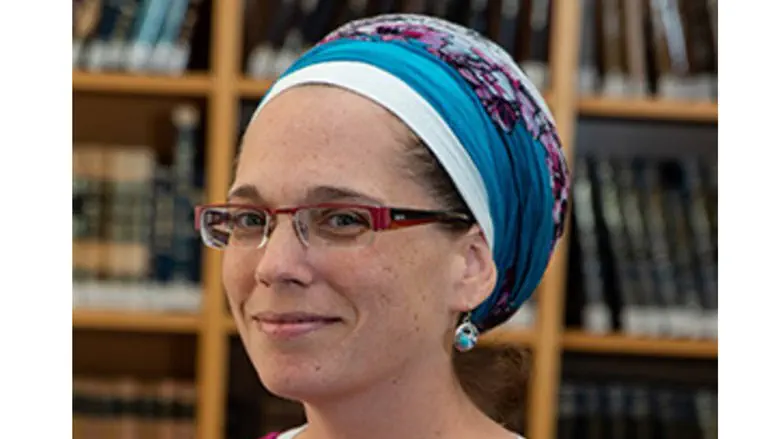
Historically, Tammuz is marked by a theme of avodah zarah—idol worship— and national tragedy. The creation and celebration of the golden calf (Shemot 32) occurred during Tammuz, as did the breaching of Jerusalem’s walls which led to the eventual destruction of the Beit Hamikdash, due, in part, to idol worship. It is not only understood as a historical practice, but as a psychological and spiritual condition that continues today in more subtle and insidious ways.
From Ancient Idols to Modern Distractions
Tammuz is a time for potential distortion. The spies in Parshat Shelach (Bamidbar 13) —sent to scout the Land during this month—returned with a distorted vision of what they had seen. They gave false power to the land and her inhabitants. When we distort what we see and give power to things which shouldn’t have power, it ultimately weakens us. As they said “the people that dwell in the land is powerful, the cities are fortified and very great, and we also saw the offspring of the Anak…we cannot ascend to that people for it is stronger than us.” Because we give power away to something false, it weakens us.
This sentiment is echoed in the verses in Tehillim (115:4-8) talking about avodah zarah: “Their idols are silver and gold, the work of human hands. They have mouths, but do not speak; eyes, but do not see… Those who make them become like them.”
The prophet Yechezkel recounts a disturbing vision within the Jerusalem Temple: Then He brought me to the entrance of the gate of the Lord’s House… and there sat women weeping for Tammuz (8:14). Tammuz was a Mesopotamian deity associated with fertility and the blooming of new life. The women’s mourning was a traditional idol worshipping practice during the intense heat of summer when the deity would be proclaimed dead, to be “resurrected” at the end of the season. This summer month was therefore named Tammuz in the Babylonian (and subsequently Jewish) calendar. The jarring image of the women crying captures the emotional misplacement that often characterizes idol worship—not just worshipping false ideas but misdirecting our emotional energy, further weakening us.
Choosing Whom to Serve
To do a tikkun (act of repair or rectification) in the month of Tammuz, we want to take back our power by questioning where we direct our energies. Every individual may have his or her answers which come to the surface. I find it helpful to explore different personality types to shed light on common “altars of worship” which people tend to serve.
The Enneagram personality system helps illuminate the subtle psychological idols we create. In broad strokes, there are 9 Enneagram types, and each has a unique set of ideals with a range of healthy and less healthy forms of self-expression. Each personality type has beauty and strengths, each with core goals, fears, blind spots and compensatory tendencies, something they overvalue in order to feel safe or whole. The awareness of where it might lead you astray can be a remarkable tool. Each type may ask: “What am I turning into an ultimate value? Is it helping me serve truth, or is it replacing it? Is it taking my power or making me stronger?”
Miriam Adahan’s book, Awareness (based on the Enneagram) highlights how this system has profound psychological insight which can help individuals understand their tendencies and rectify them. She offers an example of a personality type in a less healthy state “whose high anxiety level causes him to literally idolize others and seek their protection…once this is understood and accepted, this person can work on his tikkun, which is to develop an internal wellspring of faith, wisdom and love (pg. 4).
The beauty of this psychological system is that it offers clear direction for healthier self- expression and direction of emotional energy; It offers a clear path to tikkun to veer away from our modern-day idol worship.
Avodah zarah is often a deeply emotional, charged practice of misplaced energy and misguided behavior. We are so often habituated to unhealthy practices and give our power to false idols without even realizing it. Emotional and spiritual distress, in whatever form it may be, becomes normalized. The only way to change the pattern is by first knowing yourself. This is the way to self-improvement and tikkun (Rabbi Shlomo Wolbe, Alei Shur p.64).
Let us use this Tammuz to choose wisely, to clear our minds and our hearts and ask ourselves who and what we are really serving, where are we directing our emotional energies? Are we mourning after some perceived loss, as the weeping women over Tammuz? Are we chasing something that offers false hope, like the people creating the golden calf?
Our emotional and spiritual longings either consume us or refine us, and we get to choose. “Fear Hashem and serve Him with wholeheartedness and truth; remove gods (avodah zarah) … Choose this day who you will serve (Yehoshua 24: 14-15).”